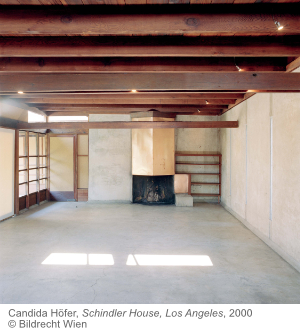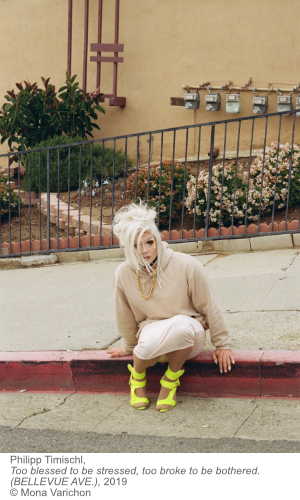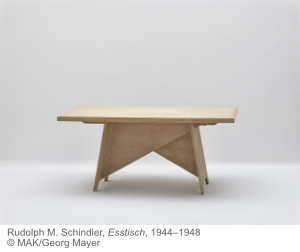 |
 |
 |
 |
 |
 |
| |
 |
|
 |
 |
 |
  |
  |
 |
 |
 |
 |
|
 |
 |
Rudolph Michael Schindler
[Rudolf Michael Schindler] |
|
* Vienna [Wien], Austro-Hungarian Empire [Österreichisch-Ungarische Monarchie], 10 September 1887 |
|
+ Los Angeles (CA), United States, 22 August 1953 |
| nationality:
american |
|
 |
|
|
|
|
|
 |
 |
 |
BUILDINGS |
 |
|
 |
|
 |
 |
 |
|
|
 |
|
|
  United States
United States
» Los Angeles |
|
|
|
|
 |
|
|
  United States
United States
» Los Angeles |
|
|
|
|
 |
|
|
  United States
United States
» Palm Village |
|
|
|
|
 |
|
|
  United States
United States
» Los Angeles |
|
|
|
|
 |
|
|
|
 |
|
|
  United States
United States
» Los Angeles |
|
|
|
|
 |
|
|
  United States
United States
» Los Angeles |
|
|
|
|
 |
|
|
  United States
United States
» Los Angeles |
|
|
|
|
 |
|
|
  United States
United States
» Los Angeles |
|
|
|
|
 |
|
|
  United States
United States
» Los Angeles |
|
|
 |
 |
 |
 |
BIBLIOGRAPHY |
 |
|
|
 |
|
 |
 |
 |
 |
 |
 |
WRITINGS
ABOUT THE ARCHITECT |
 |
|
|
 |
| Michael Darling, Elizabeth A.T. Smith, (ed.), The Architecture of R.M. Schindler, Harry N. Abrams, 2001 |
|
|
| Judith Sheine, RM Schindler, Phaidon Press, 2001 |
|
|
| James Steele, R. M. Schindler, Benedikt Taschen Verlag, 1999 |
|
|
| Lionel March, Judith Sheine, (ed.), RM Schindler. Composition and Construction, Academy Press, 1995 |
|
|
| Werner Lang, "Schindler e Los Angeles", Domus 746, febbraio/february 1993, "Itinerario/itinerary" n. 87 pp. I-X |
|
|
David Gebhard, Schindler, Viking Press, 1971
reprint: Peregrine Smith, 1980
reprint: William Stout Publishers, 1997 |
|
|
Esther McCoy, "R. M. Schndler", Lotus 5, gennaio/january 1969, pp. 92-105 (92-121)
David Gebhard, "Ambiguity in the work of R.M. Schindler", Lotus 5, gennaio/january 1969, pp. 106-121 (92-121) |
|
|
Esther McCoy, Five California Architects, Reinhold Publishing, 1960
reprint: Praeger, 1975
reprint: Hennessey + Ingalls, 1987 |
|
 |
 |
 |
 |
THE ARCHITECT IN CINEMA |
 |
|
|
 |
|
 |
 |
 |
| Title |
 |
|
 |
| Schindlers Häuser [Schindlers Houses]
|
|
| Directed by |
 |
|
 |
|
| Nationality |
 |
|
 |
|
| Year of production |
 |
|
 |
|
| Cast |
 |
|
 |
|
| Architect's role |
 |
|
 |
|
 |
 |
 |
 |
 |
 |
 |
EXHIBITIONS |
 |
|
|
 |
|
 |
 |
 |
|
|
 |
|
 On the occasion of the 100th anniversary of the Schindler House, Los Angeles (Rudolph M. Schindler, 1922), the MAK is dedicating an exhibition that reflects Schindler’s understanding of art, architecture, and design to its branch. The exhibition quotes Schindler himself who considered "space as a medium of art". Sculptures, installations, objects, photographs, videos, and projects by Austrian and international artists will be presented, which highlight Schindler's use of form and ideas and are interwoven with the history of the house. One focus is placed on former participants of the internationally highly recognized MAK-Schindler scholarship program. On the occasion of the 100th anniversary of the Schindler House, Los Angeles (Rudolph M. Schindler, 1922), the MAK is dedicating an exhibition that reflects Schindler’s understanding of art, architecture, and design to its branch. The exhibition quotes Schindler himself who considered "space as a medium of art". Sculptures, installations, objects, photographs, videos, and projects by Austrian and international artists will be presented, which highlight Schindler's use of form and ideas and are interwoven with the history of the house. One focus is placed on former participants of the internationally highly recognized MAK-Schindler scholarship program.
The house where architect Rudolph M. Schindler (1887–1953), who emigrated from Vienna in 1914, lived functions as a model of modern forms of cohabitation and comprises his understanding of architecture. At the Schindler House, Schindler, who contributed to modernity with experimental concepts, social-utopian ideas, and hybrid forms, together with his wife Pauline Schindler (1893–1977) and Richard Neutra with his family pioneered a vision of their time: living and working in a community.
 "The modern architect conceives the room", Schindler wrote in his manifesto Modern Architecture: A Programme (Vienna 1912/13), which he rephrased in a version from the 1930s as follows: "Finally, the architect has discovered the medium of his art: space". Later, Schindler expanded his concept: Developing "space as a medium of art" was aligned with his approach of architecture, as he outlined in a letter from 1943 to Elizabeth Mock, Department of Architecture, MoMA, New York. "The modern architect conceives the room", Schindler wrote in his manifesto Modern Architecture: A Programme (Vienna 1912/13), which he rephrased in a version from the 1930s as follows: "Finally, the architect has discovered the medium of his art: space". Later, Schindler expanded his concept: Developing "space as a medium of art" was aligned with his approach of architecture, as he outlined in a letter from 1943 to Elizabeth Mock, Department of Architecture, MoMA, New York.
The quote, which also serves as the title of the exhibition, opens up the space for contributions by artists Vincent Fecteau, Andreas Fogarasi, Candida Höfer, Martin Kippenberger, Marko Lulić, Dorit Margreiter, Gordon Matta-Clark, Ulrike Müller, Raymond Pettibon/Jason Rhoades/Hans Weigand, Sasha Pirker, Stephen Prina, Florian Pumhösl, Maruša Sagadin, Rudolph M. Schindler, Julius Shulman, Philipp Timischl, and Jenni Tischer.
The artists' contributions connect to spaces of imagination generated by the Schindler House and highlight Schindler's architectural language and discourse on space, form, and abstraction. The exhibition will be presented in two rooms with different atmospheres: The re-contextualization of the object, the architectural fragment, and the module set the scene for the presentation at the MAK Works of Paper Room, which corresponds to historical oeuvres and works relating to the private and public space in the MAK DIREKTION.
The installation Corner (Lulić House No. 1) (2006) in the MAK Columned Main Hall, conceived by Marko Lulić as a spatial drawing, functions as the entrance to the exhibition. Photographs from the series Schindler House, Los Angeles (2000) by Candida Höfer, who focused on structures and situations in the interior, will be presented. Pictures by photographer Julius Shulman from the 1950s to 1990s show how it was or could have been to live at the Schindler House. Furnishings designed by Schindler for Russian emigrant Beata Inaya's apartment are contrasted with the installation As He Remembered It, Living Room Category (2011) by Stephen Prina. Prina chose pink as a symbol for his work, which generates a narrative of reconstruction and original. Inaya, in turn, had her furniture—presented at the exhibition in a restored state without color—painted in the fashionable color pink, just like Pauline Schindler a whole room at the Schindler House.
 Based on the idea of conceiving "photography as a sculpture", Vincent Fecteau interweaves digital photos to collages or assemblages and reveals fetishes of the interior. Arranged loosely next to Prina’s abstract staging of the furniture based on Schindler, Fecteau sketches associations of living. Based on the idea of conceiving "photography as a sculpture", Vincent Fecteau interweaves digital photos to collages or assemblages and reveals fetishes of the interior. Arranged loosely next to Prina’s abstract staging of the furniture based on Schindler, Fecteau sketches associations of living.
The exhibition addresses the furniture Rudolph M. Schindler designed for his own house in the cinematic narration Donald Judd and I (2016) by Sasha Pirker. Judd had the furniture replicated after a visit to the Schindler House and furnished the Whyte Building in Marfa, Texas, with it. There, he also showed abstract paintings from the 1960s. The ensemble still exists today.
Rudolph M. Schindler’s role model was Frank Lloyd Wright, in whose architecture office he worked for four years and whom Schindler referred to as a "Raum-Architekt" (an architect of space). In her photo series Textile Blocks (2019), Dorit Margreiter documents the building modules of the façade of the Ennis House (1924) by Wright in Los Angeles, which are put together from geometric shapes to form a continuous pattern. The blocks structured like a ribbon refer to the connection between textiles and architecture. In his work series Plastik (2018), Florian Pumhösl tests modernistic models of abstraction, which he combines to sculptural forms. The fragile works made of plaster link ornaments and space.
In the MAK exhibition, one of the installations to trace Rudolph M. Schindler’s conceptual thinking is Perceptual Screen (Schindler's Terrace, 4800 Hollywood Blvd, L.A. (2019) developed by Jenni Tischer together with artist Rand Sevilla, who lives in L.A. The work refers to a modernistic terrace from 1925 which Schindler planned at Olive Hill with Richard Neutra's support.
In his photographs Too blessed to be stressed, too broke to be bothered (2019), Philipp Timischl turns the public space of Los Angeles into a stage. For a photo shooting, he developed a drag character who positions himself in different poses in the city. The Metro-Net Projekt (1990s) by Martin Kippenberger takes the visitors into the imaginary space of traveling and connects continents—the ventilation shaft planned for Tokyo was installed in the garden of the Schindler House in 1998.
As a supporting program to the exhibition, the film Schindlers Häuser (2007) by Heinz Emigholz will be presented (MAK Lecture Hall: Tue, 19 April 2022, 6:30 p.m. and Tue, 3 May 2022, 6:30 p.m.). |
|
|
| Soft Schindler, Los Angeles, West Hollywood, Schindler House, 12 october 2019 / 16 february 2020 |
|
|
| R.M. Schindler: The Prequel, Los Angeles (CA), MAK Center for Art and Architecture at the Schindler House, 10 september / 6 december 2015 |
|
|
| L.A. in Wien/Wien in L.A., Los Angeles, SCI-Arc Library Gallery, 24 july/13 september 2009 |
|
 |
  |
 |
|
|